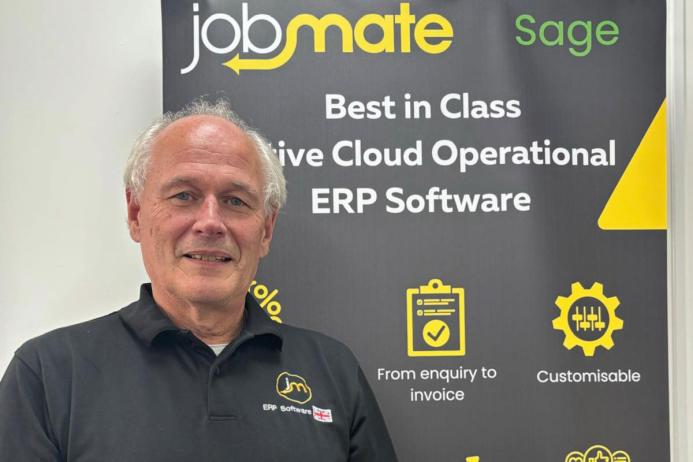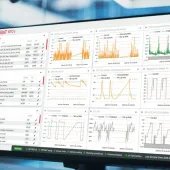Resource planning for the quarrying industry

First published in the May 2025 issue of Quarry Management
Is it time to choose your system?
Operators and suppliers in the quarrying, construction, and plant equipment industry are fast becoming aware of the benefits associated with using an efficient ERP (enterprise resource planning) system, but can be forgiven for not fully understanding how to select a solution that best fits their business model.
In this article, Chris Dalton, co-founder and chief executive officer of Midlands-based operational ERP software developers jobmate, takes a look at some of the key factors which need to be considered.
In broad terms, an ERP system should ensure increased productivity by automating all key business processes while providing management insight, control, and agility. The system should embrace reporting, IT requirements, accounting, eCommerce, labour, purchasing, HR, cost control, forecasting, and job planning. Most importantly, it should be a cloud-native SaaS (software-as-a-service) where the operating system and data are in the cloud, allowing them to be simply integrated through APIs (application programming interfaces) with other software, plus fully cyber-secure by being hosted in a reputable cloud software service.
So, how do you choose and what sets operational ERP apart from standard ERP systems? Are you thinking, ‘I’ve heard of ERP, but I am confused by the many providers who each offer a different suite of services.’
The acronym ERP stands for: Enterprise – the business; Resource – the employees, products, suppliers and assets of the business; Planning – the planning of the work and services the business offers. Or, put simply, it is all about controlling every key aspect of your business through one operational software. However, ERP is not to be confused with financial and CRM packages, which the common definition of ERP often creeps into. Buyer beware!
Traditionally, ERP has been the domain of large businesses. It can be expensive, inflexible, customized to a particular business requirement, and not always user-friendly – most likely because its user interface model is drawn from a spreadsheet design. These ERPs are often known as ‘on-prem’, which operate on a company’s own hardware/network infrastructure. Mobile ability is also limited or non-existent as it requires special devices, not just an everyday Android or Apple mobile phone or tablet.
The software used is ‘compromised’, with feature modules that serve a purpose but were never best-in-class; hence, businesses may be liable to underperform by using adequate yet not wholly applicable or integrable software. The systems can be expensive to maintain and have high initial development costs, implementation fees, and licences.
Moving up to the native cloud
The evolution of ERP systems from traditional on-prem to SaaS cloud-native-based (operating software and data are in the cloud), particularly with the advent of cloud-native hosting (AWS and Microsoft Azure), has significantly expanded ERP software’s reach through flexibility and lower costs for medium- and smaller-sized businesses.
This shift initially drove an app market based on singular features, but now, more complex cloud-native ERP systems are available. Their advent is bringing down prices and improving accessibility through PWA (Progressive Web Application) to mobile apps, which provides greater accessibility, control, and cost reduction.
The key advantage of cloud-native over on-prem software is that you can easily connect to other software through APIs while benefiting from a flexible and multi-functional solution. Plus, it brings the peace of mind that comes with being virtually impervious to cyber attack.
This change has created a best-in-class software pedigree comprising distinct functions within a single and seamless operational ERP software solution, which can be expanded through simple integrations of your choice with financial packages (eg Sage, XERO, QuickBooks), CRM packages (eg Salesforce, HubSpot, Pipedrive), and HR packages (eg Bright HR, Sense HR, Sage HR).
Of course, numerous solutions are on offer, some more sector-featured than others. Either way, it is recommended to choose best-in-class operational software that combines easy use and installation with sector-specific functionality and the security assured by native-cloud.
Ultimately, your operational ERP system is your business’s ‘beating heart’; it is the engine that collects financial data and manages jobs, data, suppliers, stock, customers, and deliveries while keeping administration time and costs down. Above all, it can give you visibility, information control, and the freedom to manage and grow your business more effectively.
So, if now is the time to select an efficient operational ERP system for your business, invest plenty of time in researching the market. Remember to look for cloud-native systems that match or simply modify your way of working through integrations or customization.
Subscribe to Quarry Management, the monthly journal for the mineral products industry, to read articles before they appear on Agg-Net.com








